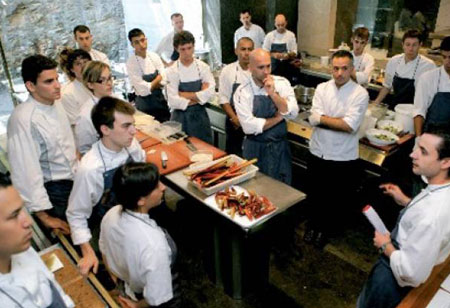THANK YOU FOR SUBSCRIBING
Be first to read the latest tech news, Industry Leader's Insights, and CIO interviews of medium and large enterprises exclusively from Food and Beverage Tech Review
How to Pull More Customers to Your Restaurant
The trick lays with the source of the data-set where operators face the dilemma about which information to prioritize and how to use it.

By
Food and Beverages Tech Review | Monday, June 17, 2019
Stay ahead of the industry with exclusive feature stories on the top companies, expert insights and the latest news delivered straight to your inbox. Subscribe today.
Centralization of the data-driven possibilities of restaurant business will perform much better than before.
FREMONT, CA: Entrepreneurs and marketers in the new era are all running data-driven businesses. Information about clientele, staff, and operations forms the foundation of every decision-making processes. Suppose, while operating in the restaurant tech, it has been observed that a particular group of people is buying a specific item. This information guides the decisions taken by the operator or the marketer.
What makes the difference is the value and consistency of this data. The more of the data present, more the marketers can turn it into an actionable strategy. The trick lays with the source of the data-set where operators face the dilemma about which information to prioritize and how to use it.
Managing Stock:
With food and drink, stock management is particularly important. The use of an inventory management apparatus in partnership with a data-driven POS system can assist the marketer in gaining complete transparency into what is getting out of the kitchen and what is decomposing in the back room.
Managing Choice:
Collection of menu item data can aid the operator in judging the patterns in customer preference with respect to time. Customers clinging to, or trying a vegan diet will welcome the choice of choosing between vegan and vegetarian options. A buyer who goes for a seasonal dish might appreciate if it is available throughout the whole year.
Managing Offers:
If customers have options for incentives to return to the restaurant, the operator should go for it, as it will generate customer loyalty. Some ordering systems can even recognize the interests of customers and demographics, assisting even more in-depth customization. Moreover, if the hotel chain has its own mobile app, past customer data will come in handy to advertise relevant offers.
Managing Staff:
A restaurant’s staff needs to be delicately balanced―with too many people, the operator will have to pay them unnecessarily. If there are few employees, the owner will find it challenging to provide customers the service they deserve.
Managing Insights:
The most potent advantage of operating a data-driven restaurant is the opportunity to develop operations and then formulate further improvements. By processing a variety of visitor and staff data, owners can comprehend how teams are performing, what sales and marketing teams are responding to, and which menus ought to be incorporated.
I agree We use cookies on this website to enhance your user experience. By clicking any link on this page you are giving your consent for us to set cookies. More info


However, if you would like to share the information in this article, you may use the link below:
https://www.fbtechrevieweurope.com/news/how-to-pull-more-customers-to-your-restaurant-nwid-222.html





